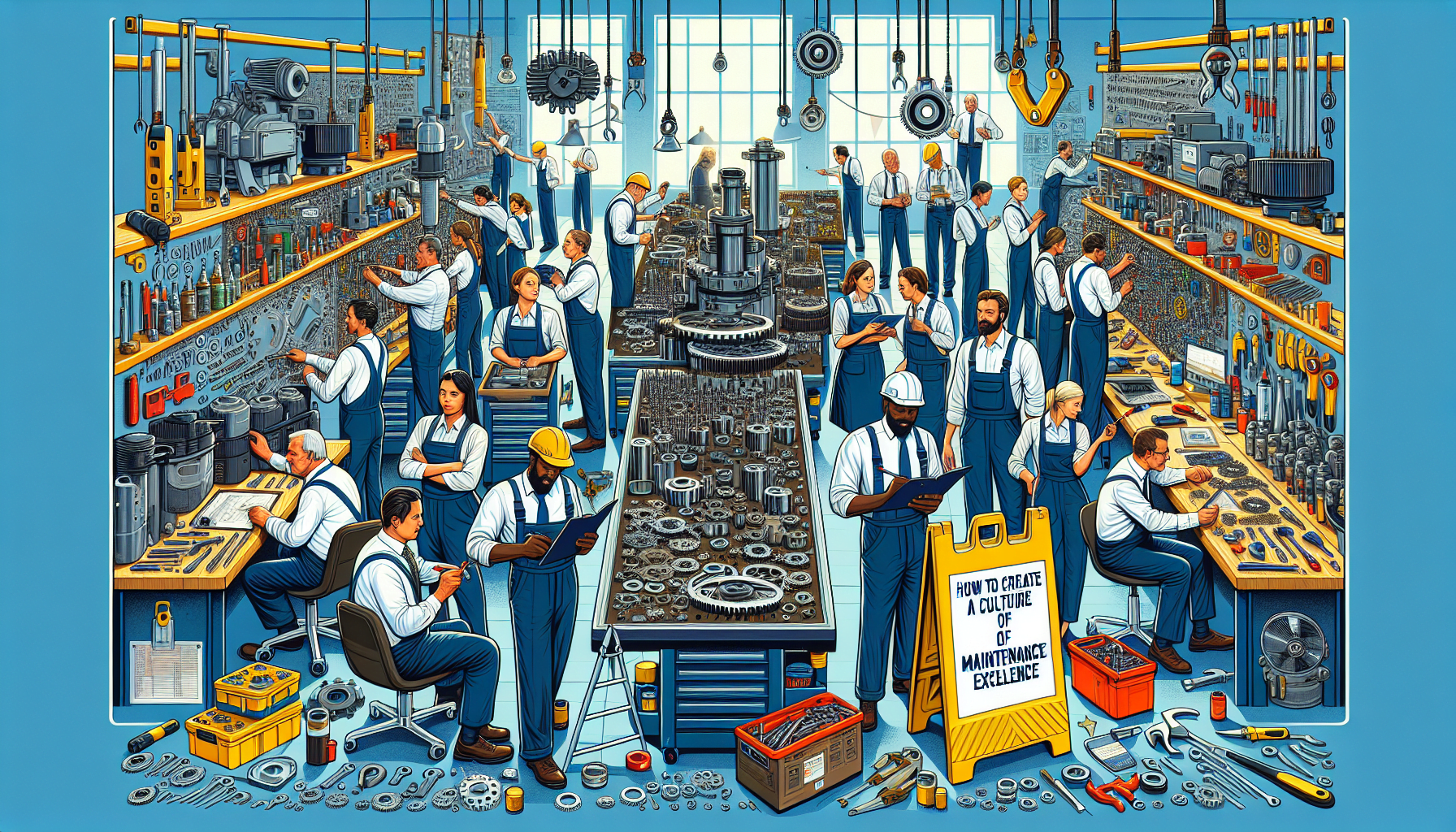Creating a culture of maintenance excellence is crucial for businesses that rely on efficient warehouse operations. By prioritizing maintenance and implementing proactive strategies, companies can ensure the smooth functioning of their equipment and maximize productivity. In this article, we will explore the key steps to create a culture of maintenance excellence within your warehouse.
The Importance of Maintenance Excellence
Maintaining a high level of equipment reliability is essential for warehouse operations. Regular maintenance helps prevent unexpected breakdowns, reduces downtime, and extends the lifespan of equipment. By proactively addressing maintenance needs, businesses can avoid costly repairs and replacements, as well as minimize disruptions to their workflow.
Here are the key steps to create a culture of maintenance excellence:
1. Establish Clear Maintenance Standard Operating Procedures (SOPs)
To promote maintenance excellence within your warehouse, it is crucial to establish clear standard operating procedures (SOPs) for maintenance tasks. These SOPs should outline the steps to be followed for routine inspections, preventive maintenance, and repairs. They should also include guidelines for documenting maintenance activities and tracking equipment performance.
By having well-defined SOPs in place, you provide your maintenance team with a clear roadmap for their tasks. This ensures consistency in maintenance practices and helps identify any deviations or areas for improvement.
2. Train and Empower Maintenance Personnel
Investing in the training and development of your maintenance personnel is essential for creating a culture of excellence. Equip your team with the necessary knowledge and skills to carry out their responsibilities effectively.
Provide training on equipment maintenance, troubleshooting techniques, and the proper use of maintenance tools and software. Additionally, encourage continuous learning by keeping your maintenance team updated on the latest industry trends and technologies.
Empower your maintenance personnel by giving them the autonomy to make decisions regarding maintenance activities. This helps build a sense of ownership and accountability, leading to more efficient and proactive maintenance practices.
3. Implement a Preventive Maintenance Program
Preventive maintenance is a key component of maintenance excellence. Implementing a preventive maintenance program involves conducting regular inspections, servicing equipment at specified intervals, and replacing parts or components before they fail.
A preventive maintenance program helps identify potential issues early on, allowing for timely repairs or replacements. This helps prevent major breakdowns and reduces the likelihood of costly emergency repairs.
Utilize maintenance management software to schedule and track preventive maintenance tasks. This ensures that inspections and servicing are carried out on time, reducing the risk of equipment failure and improving overall reliability.
4. Foster a Culture of Communication and Collaboration
Effective communication among different departments is vital for maintaining equipment and ensuring its smooth operation. Encourage open lines of communication between maintenance personnel, warehouse staff, and management.
Implement a system for reporting equipment issues or potential maintenance needs. This can be in the form of digital maintenance request forms or regular meetings to discuss maintenance concerns. By fostering a culture of communication and collaboration, potential problems can be addressed promptly, preventing larger issues down the line.
Implementing a material handling equipment management system can streamline communication, scheduling, and tracking of maintenance activities. This can help enhance efficiency and ensure that maintenance tasks are carried out in a timely manner.
5. Regularly Monitor and Evaluate Maintenance Performance
Monitoring and evaluating maintenance performance is essential for continuous improvement. Regularly track key performance indicators (KPIs) such as equipment uptime, mean time between failures, and maintenance response time.
Analyze the data to identify trends and patterns, enabling you to make data-driven decisions regarding maintenance practices. Adjust your maintenance SOPs and preventive maintenance program based on the insights gained from performance monitoring.
Encourage feedback from your maintenance personnel and warehouse staff to gather insights on potential areas for improvement. Actively seek suggestions for enhancing maintenance practices and address any concerns raised.
Conclusion
Creating a culture of maintenance excellence within your warehouse is crucial for optimized operations and cost-effectiveness. By establishing clear SOPs, providing training and empowerment to maintenance personnel, implementing a preventive maintenance program, fostering communication and collaboration, and regularly monitoring and evaluating maintenance performance, you can achieve and sustain a high level of maintenance excellence.
Remember that maintenance excellence is an ongoing process. Continuously adapt and refine your maintenance practices to meet the evolving needs of your warehouse and ensure the long-term success of your operations.

